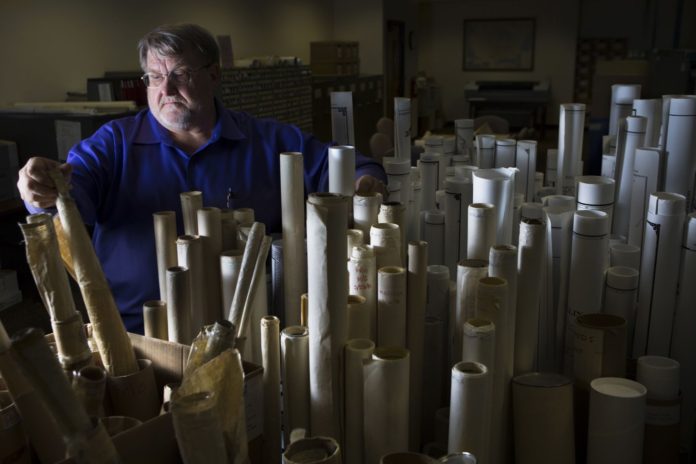Using real-time monitors, scientists have linked a swarm of small earthquakes west of Fort Worth, to nearby natural gas wells and wastewater injection.
The report comes amid renewed interest in the cause of several earthquakes in Texas and other states, many thought to be tied to oil and gas drilling, primarily wastewater disposal wells.
State lawmakers are considering spending about $2.5 million to fund TexNet, a seismic monitoring program at the University of Texas at Austin that could help detect, locate and examine earthquakes more precisely.
Despite the report, the most detailed and specific study of the rash of earthquakes, the state’s official seismologist has no plans for immediate action. The Texas Independent Producers and Royalty Owners Association was equally cautious following the report, issued April 21 by Southern Methodist University and the U.S. Geological Survey.
A separate report, also issued last week, said more than a dozen areas in the United States have been shaken in recent years by small earthquakes triggered by oil and gas drilling.
The man-made quakes jolted once stable regions in eight states, including parts of Alabama, Arkansas, Colorado, Kansas, New Mexico, Ohio, Oklahoma and Texas, according to researchers at the U.S. Geological Survey.
Experts said the spike in seismic activity is mainly caused by the oil and gas industry injecting wastewater deep underground, which can activate dormant faults.
The SMU study focuses on the rash of quakes around Azle. In 84 days from November 2013 to January 2014, when scientists monitored the shaking, the area around Azle shook with 27 magnitude 2 or greater earthquakes. It’s an area that had no recorded quakes for 150 years on faults that “have been inactive for hundreds of millions of years,” said SMU geophysicist Matthew Hornbach.
When the volume of injections decreased significantly, so did the shaking.
The scientists concluded that removing salt water from the wells in the gas production process and then injecting that wastewater back underground “represent the most likely cause” for the swarm of quakes, according to a study published April 21 in the journal Nature Communications.
The scientists determined this based on where and when the earthquakes happened; computer models that track pressure changes; and company data from nearby wells. Hornbach said the timing and location of the quakes correlates better to the drilling and injection than to any other possible reason.
“There appears to be little doubt about the conclusion that the earthquakes were in fact induced,” USGS seismologist Susan Hough, who wasn’t part of the study team, said in an email. “There’s almost an abundance of smoking guns in this case.”
This adds to other studies that linked injecting wastewater from energy wells to a tremendous jump in earthquakes in Oklahoma and southern Kansas, where there have been more than 950 magnitude 2 or higher quakes so far this year, according to the USGS.
Craig Pearson, the state’s official seismologist, said at an April 21 news conference he would not recommend that the Railroad Commission, the state’s oil and gas regulator, suspend activity at two wells the report’s authors identify as the source of the temblors in Azle.
Pearson, who previously studied induced seismicity at the Los Alamos National Laboratory, was hired last March after residents from Azle and neighboring Reno traveled to Austin to ask the Railroad Commission to halt oil and gas operations.
Pearson said he will review the report and likely will offer his opinion next month.
Also on April 21, the Oklahoma Geological Society said it is “very likely” that most of the earthquakes that have shaken the state in recent years have been triggered by the subsurface injection of wastewater from oil and natural gas drilling operations. The society released a statement following an investigation into dozens of earthquakes recorded in central and north-central Oklahoma.
Unlike other research that linked quakes to the injection of wastewater, the SMU study also sees a secondary link in another part of the drilling process, when massive amounts of brine are taken out of the ground with the gas, said study co-author William Ellsworth of the USGS. Removing the saltwater changes the underground pressure, Hornbach said.
But the deep injection of the wastes still is the principle culprit, Ellsworth said. The controversial method of hydraulic fracturing or fracking, even though that may be used in the drilling, is not physically causing the shakes, he said.
Energy In Depth, an industry-funded group, praised the research for developing a model that can be used for further study, but in a paper on its website raised some questions about the study.
Alex Mills, president and chief of staff of the Texas Alliance of Energy Producers, noted that the Railroad Commission adopted changes to its disposal well rules in 2014. Since then, no earthquakes have been reported in the Azle area. “RRC regulations require a seismic risk assessment of the injection well location as well as ensuring that the operator will provide any additional information the RRC deems necessary as part of the permitting process,” he said.
The SMU findings come amid heightened debate over oil and gas regulations, including efforts in some communities to ban drilling. In Texas, lawmakers are considering bills that would limit cities’ abilities to do so.
Meanwhile, SMU seismologists are still examining the cause of ongoing earthquakes in suburban Dallas. In February, researchers released preliminary results that showed a narrow fault line extending from Irving to West Texas. Researchers previously identified disposal wells as the source of seismic activity at the Dallas/Fort Worth International Airport. However, those disposal wells were taken offline several years ago.
http://www.smu.edu/News/NewsIssues/EarthquakeStudy
This story contains reports from Seth Borenstein, AP Science Writer; Associated Press writers Emily Schmall in Fort Worth and Tim Talley in Oklahoma City; and Robert Francis of the Fort Worth Business Press.






